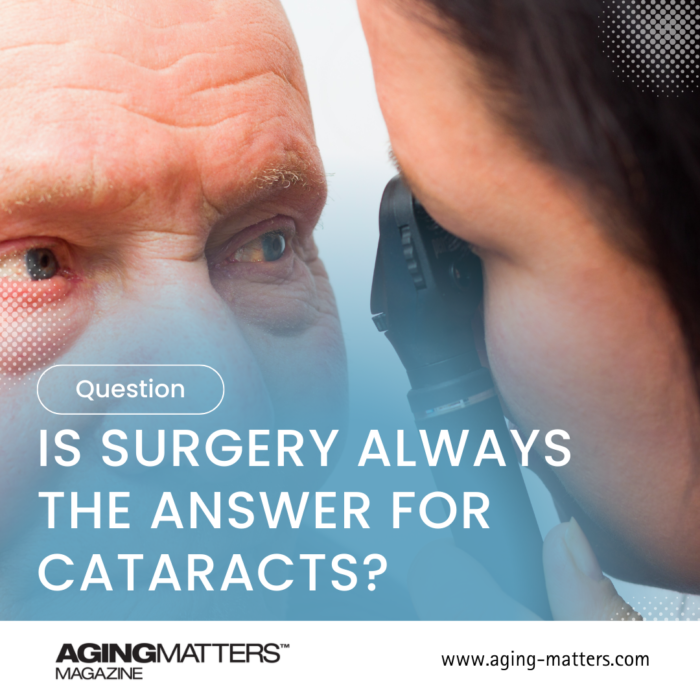
Do Cataracts Always Need Surgery?
October 26th, 2023Aging may be natural, but that doesn’t mean it’s always easy. Things we once took for granted can suddenly become more challenging.
Just like the rest of our body, our eyes also age. One of the most common eye conditions that come with aging is cataracts. You may have heard of them before, and you might even know someone who has had cataract surgery.
But is surgery always the answer for cataracts? Let’s take a look.
What Are Cataracts?
Our eyes are made up of many parts. Beyond the iris and pupil, there is also a cornea, lens, retina, and more. These parts work together to help us see clearly.
Just like a camera lens, the eye’s lens focuses light onto the retina. This is what allows us to see objects and images clearly. But as we age, this lens can become cloudy. Some compare the clouding to looking through a foggy window or a piece of wax paper. This clouding is what we call cataracts.
Cataracts usually appear in both eyes. Although, they might not develop at the same rate or be exactly alike in each eye.
How Do Cataracts Form?
The primary cause of cataracts is age. The proteins in our eyes’ lenses can clump together and cloud an area of the lens. These clumps can grow and cover more of the lens over time.
But aging isn’t the only contributing factor to cataracts. Other risk factors include:
- Diabetes
- Smoking
- Family history
- Eye injury
While it is mainly older adults who develop cataracts, children and babies can get them, too.
For this reason, you should always seek medical advice if you or a loved one have any health concerns – no matter their age.
Cataract Treatment Options
The most common treatment for cataracts is surgery. This involves removing the cloudy lens and replacing it with a clear, artificial one. But what if we told you there are other ways to manage cataracts without surgery?
Some options include:
- Wearing glasses or contact lenses to improve vision
- Turning on bright lighting when reading
- Using eye drops specifically designed for cataracts
Eye drops containing naturally occurring compounds like N-acetylcarnosine (NAC) can help those with cataracts. One such product is Can-C™ eye drops.
Benefits of Can-C™ Eye Drops
Surgery isn’t always the first choice for some. If your cataracts are in the early stages, Can-C™ eye drops may be a viable option. They offer an alternative to surgery by providing comfort and aid to those with cataracts. Can-C™ eye drops contain naturally occurring nutrients and have shown measurable effects in a short time frame.
Additionally, Can-C™ eye drops can benefit those with other eye problems such as glaucoma, dry eyes, and sensitivity to glare. They can also provide relief for contact lens wearers who may experience discomfort or irritation.
With the potential to improve vision, aid in comfort, and lubricate the eyes, Can-C™ eye drops are worth considering for those who want to avoid surgery.
Conclusion
While surgery may be the most common treatment for cataracts, it’s not the only option. Can-C™ eye drops offer a non-invasive and natural alternative that can improve vision and provide relief for those with cataracts. Not only that, but they can also benefit those with other eye issues and improve comfort for contact lens wearers.
So before you schedule that surgery, consider giving Can-C™ eye drops a try!









